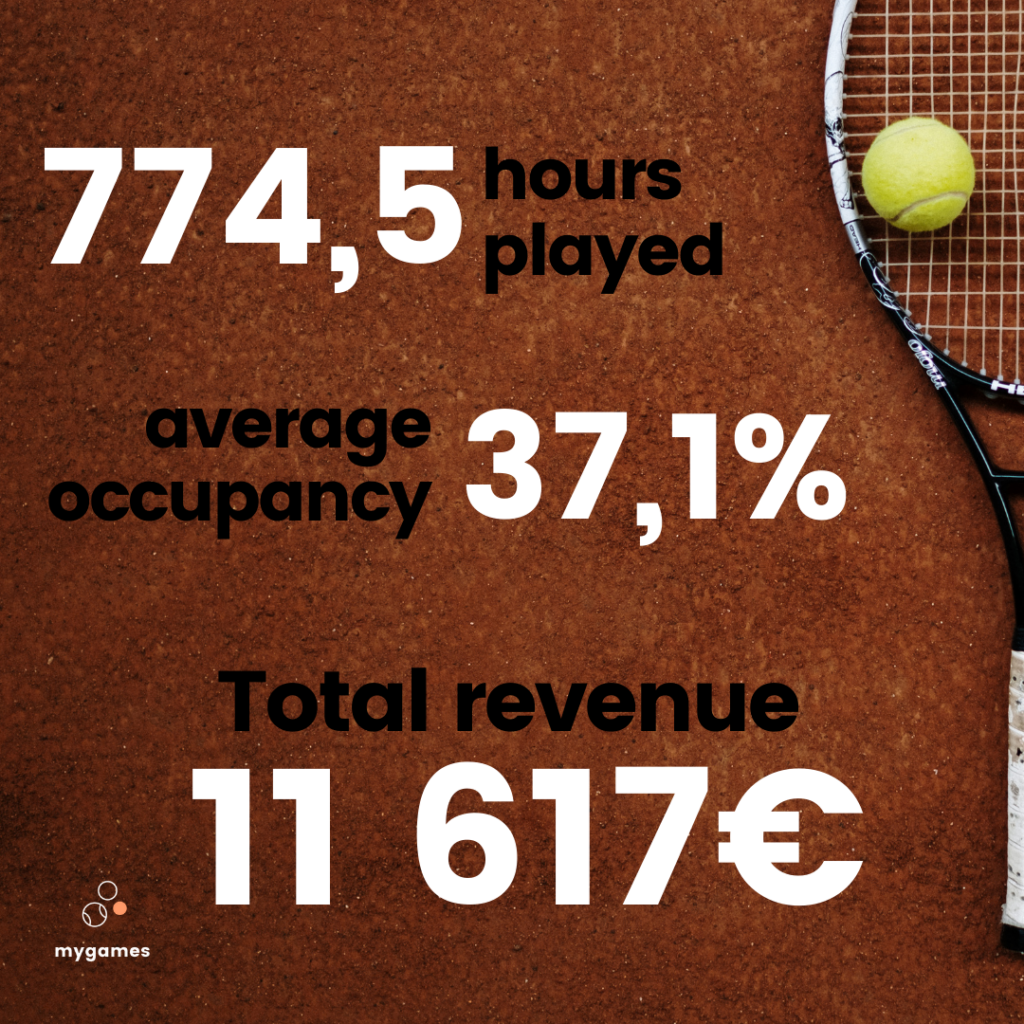Last year we opened MG Demo Court in the middle of summer, which is why the first full season for us ended with the arrival of autumn this year. The demo court in Pärnu is a test laboratory for us in many ways. In addition to testing new technologies on our court, we want to prove to ourselves and to you that we can reduce the administrative costs and increase the revenue of a tennis court. Let the first season be a landmark here.
In the face of the season, we consciously decided not to make any effort this summer. We set the hourly rate, pressed a button and let the court cope on its own. We did not even use any of the features that MyGames platform actually offers – did not set prices according to expected demand, did not create customer groups, did not enter permanent court times, did not send notifications to players, and so on. We did nothing and here is the result…

The seasonal average occupancy of 37.1% was an unexpectedly positive surprise for quite a number of reasons. Court was open from 7 am to 11 pm and, as expected, the early morning and late evening hours were not widely used. Plus there were 12 full days during the whole season, when there were no games on the court due to bad weather.
Court automation worked like a charm. There were only a few occasions when the system, which is still in its infancy, offered minor faults, so it was necessary to visit the court and meet the customer or open the door from a distance. There were also two double bookings, which the system should have ruled out but…you know. You can’t foresee everything. Thank you guys for accidentally detecting the error and finding a “back door” for making a reservation. These doors are now permanently locked 😉
What did we learn from this season?
First of all, a product can ever be finished and the development team never rests. When all the small bugs get fixed on the momentum, new ideas gather on paper and wait for a little calmer time. Winter, for example.
The biggest value we take with us from the last season is data. We didn’t set up dynamic pricing or special offers because we wanted to compare every hour, day, week, and month on an equal footing. Now we know what times are always occupied and when there are rather few players. We know how different anniversaries affect the traffic and what happens the day after Midsummer Day. It could be assumed that the court is rather empty on June 24, but the occupancy rate on that day was 57%. The day after that, however, as much as 77%.
We have 135 days and 774.5 hours of material to analyze to make informed decisions for the coming season. In fact, we are still learning.
Season in €€€
In the interests of complete transparency, we also measure the past season in money. Let’s do simple math considering the season’s turnover, automation rent and commissions. We will not convert our own individual working hours into euros, because we only had to empty the bins once a week, and often did this during our own court time.
- Total turnover – 11 617 €
- Rent for the automation hardware (4.5 months) – 562.50 €
- Commission from payments (25%) – 2904.25 €
- Labor costs – ☺
If we deduct the service fees, we get 8150 euros and 25 cents as income for the court owner. Not a bad result at all. Given that we did nothing.
So what happens if you leave your tennis court alone? Nothing bad can happen. It’s all good. The idea of a self-service court is that the owner or manager of the court should deal with it as little as possible. Be it a private owner, the head of a youth center or the headmaster of a local school who has spent the previous summers on the phone as an administrator. The court can handle itself and nothing really happens if you do nothing.
But we are inspired by another question: What could happen if we actually did something?
What would happen if we analyzed the collected data and set up a price list according to demand? We could reward early awakeners with an hourly rate of 5 euros or make the price list dependent on the weather. What if we invited more coaches to our court, set separate price lists for them and allowed them to enter their own permanent court times? Or let players run their own tournaments? What if we notified players when peak hour time is open for booking or made last-minute offers at half price? Automatically, of course.
We’ll find out in the new season. So far, to all outdoor courts – have a nice winter vacation!
Fun facts:
- The first early awakener, who came to play at 7.00 am, arrived only on July 2
- Tennis is mostly played during lunchtime
- On the record day, the court was in use for 13 consecutive hours



